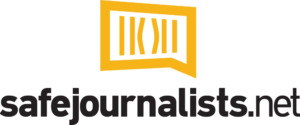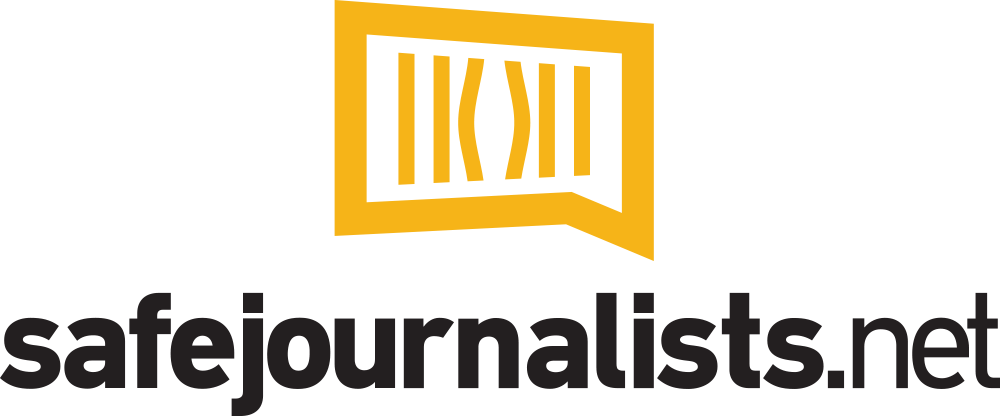On the occasion of the International Human Rights Day, the SafeJournalists network, indicates that this year, for the most part, stagnation or a slight decline was recorded compared to the previous two years when it comes to the Journalists Safety Index in the Western Balkans region.
Many cases of attacks on journalists remain unreported, because the existing institutional mechanisms are not effective enough in preventing and punishing attacks, and an increased number of online threats has been recorded. Investigations are long-lasting and without real, positive effects on victims and the rule of law. SLAPP lawsuits are also on the rise, especially against investigative journalists where the SLAPP’s are seeking large monetary damages and even imprisonment. Also, the number of slanders and insults against journalists is increasing.
*This chart is interactive – click on it to get more data
made by flourish
Albania: In the 2022 Journalist Safety Index for Albania, the score was 2.84, compared to 2.85 in 2021, reflecting a slight decrease and a mixed situation. The government withdrew a controversial anti-defamation package and upheld laws for journalistic source confidentiality, but challenges persisted in defamation, libel, and privacy laws, with slow and often ineffective responses to threats and attacks against journalists. Despite no systemic life-threatening cases, nine actual attacks were reported, and the journalism environment continued to be undermined by structural issues such as political and business ties to media, lack of funding transparency, media blackmail, conflict of interests, limited media plurality and access to information, increased disinformation, and poor working conditions.
Bosnia and Herzegovina: Score of the Safety Index of Journalists in Bosnia and Herzegovina for 2022. It is in a significant decline compared to 2021 – from 2.86 to 2.71. Media legislation has not only not been improved, but the criminalization of defamation has been initiated as an additional legal instrument to restrict freedom of expression, and politicians and representatives of the judiciary continue to put pressure on journalists. The working conditions of journalists are getting worse. In 2022, there is a 137% increase in media freedom violations and security risks for journalists, and political influences and direct interference in the work of the media in Bosnia and Herzegovina are increasingly pronounced. The number of cases resolved in courts in favor of journalists has increased, although investigations into attacks on journalists are still unlawfully lengthy and ineffective, and the final verdicts have no real, positive effects on the victims and the rule of law in Bosnia and Herzegovina. As far as actual security is concerned, during 2022 there were 22 cases of threats and pressure on journalists, and 7 threats and attacks on media houses. There is a significant increase in political pressure and hate speech in the online sphere, which has affected the decline of Bosnia and Herzegovina by 9 places in the world rankings of media freedom.
Croatia: The Journalist Safety Index in the report for Croatia for 2022 was rated slightly better than in 2021; it could be said that it is more stagnation than progress. Prevention and process were rated at the same average rating in 2021, while the legal and organizational environment and safety of journalists were rated slightly better. This report also showed that journalists still underreport threats and attacks, that the number of lawsuits against journalists and the media is still high (including SLAPPs), and that institutions still do not have mechanisms to combat violence against journalists.
Kosovo: The journalist safety index for 2022 is in decline compared to 2021. Kosovo’s media legal framework mirrors that of advanced democracies, yet effective implementation poses a persistent challenge. Defamation proceedings against journalists lack proper tracking, impeding the assessment of their consequences. While journalists’ source confidentiality is upheld, the prevalence of SLAPP lawsuits is increasing, serving as a tool to stifle the voices of journalists and activists. Although journalists operate without the need licensing requirements, there is a pressing need for a comprehensive union dedicated to private sector media workers in order to address existing gaps and enhance overall media integrity.
Montenegro: Montenegro retained the third place in the region in the Western Balkan Journalists’ Safety Index for 2022, with a score of 3.35, which is a slight decline compared to 2021, when the final score was 3.4. During 2022, 28 attacks and threats against journalists and media were registered in Montenegro, while the Police Directorate registered 21 cases. This means that a quarter of the cases are not reported to the official authorities. All lighter cases from previous years were solved in a very short time, and among the verdicts, there were prison sentences. Old, severe ones, remained unsolved.”
North Macedonia: The score of the Journalist safety index in North Macedonia for the year 2022 is in a slight decline compared to the year 2021. Some of the announced legal amendments aimed at improving the safety of journalists and media workers were enacted in 2022, but the upward trend in the number of defamation or insult cases against journalists and media outlets in 2022 compared to 2021 is disconcerting. 2022 marked some improvement in journalists’ access to quick and effective measures to protect journalists in cases of threats and attacks. A special prosecutor has been appointed at the Basic Public Prosecutor’s Office, responsible for monitoring the processing of cases in which journalists have been attacked, and a special call line has been set up for journalists to call. The cooperation between the competent institutions in 2022 was perceived as improved, which resulted in their efficiency in detecting the perpetrators of the attacks; however, it is still not at a satisfactory level. Investigations are mostly slow and ineffective, and no indictments have been issued against individual attacks against journalists. The number of physical attacks and threats against journalists has increased compared to last year. The level of impunity for these types of attacks is still high in the country. The rising trend of online threats against women journalists shows cause for concern.
Serbia: The Journalists Safety Index in Serbia for 2022 is in decline compared to the year before. When it comes to the legal and organizational environment, journalists have become regular targets of various criminal and civil lawsuits, and prison sentences for investigative journalists are increasingly sought. As far as prevention is concerned, media workers and journalists have already had very quick protection when reporting, which is partially effective in its implementation and the ultimate conviction of the perpetrators. Nevertheless, government representatives still selectively condemn attacks on journalists and media workers, and female journalists are still exposed to serious forms of victimization and without special protection. The score of the process part of the index remained the same as in 2021. For several years, public prosecutors’ offices and the police have established mechanisms and units that investigate and monitor attacks on journalists. The impression of selective application of law and inefficiency in certain cases often put in the background the successes of prosecutors and the police in solving certain cases, creating an image of serious pressure and influence from other levels of government. When looking at actual security, the number of threats and attacks against journalists is slightly down, but the severity of individual incidents is much higher compared to previous periods. Journalists are threatened carefully and deliberately, the attackers leave behind little usable evidence, and the field of the main attacks has moved to the Internet and social networks. Prosecutors and the police face intractable problems when it comes to online threats.
The Western Balkan Journalists’ Safety Index is a mechanism that measures and monitors changes in social and political environments that have a direct or indirect impact on the safety of journalists and media professionals while doing their work. The Index relies heavily on the Guide for the implementation of Recommendation CM/Rec(2016)4 on the protection of journalism and the safety of journalists and other media actors of the Council of Europe. The index is measured by special indicators and sub-indicators, which are graded from 1 to 7 by objective markers, and are based on objectively analysed research findings and evidence. The index consists of 4 separate units that reflect the overall picture of journalists’ safety.
Legal and organisational environment measures the existence and implementation of legal guarantees relevant to the safety of journalists, prevention records the existence and implementation of a series of preventive measures that directly affect the protection and safety of journalists, while the procedural part monitors the actions of state institutions and officials, their behaviour towards journalists and the effectiveness of the system of criminal and civil justice in investigations of threats to journalists and attacks on them. Actual security measures incidents and cases of various forms of threats and violence against journalists and the media.



